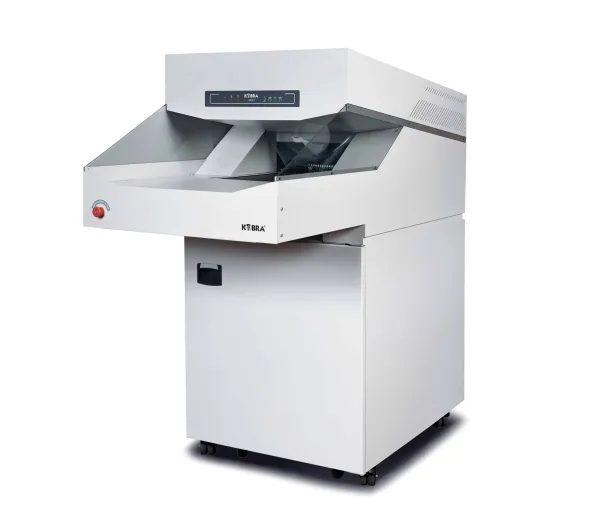How Conveyor Shredders Cut Waste Time in Half?

When Waste Management Slows Down Your Operations…
If you're running a high-volume facility—packaging, warehousing, or manufacturing—you already know how quickly waste can pile up. Overflowing scrap bins, material delays, and excessive downtime aren’t just small hiccups—they’re operational liabilities. Manual waste handling eats into labor hours and space. That’s where an industrial conveyor shredder comes in and transforms your floor efficiency.
Why Conveyor Shredders Are a Must-Have in High-Volume Operations
In fast-paced environments, time is more than money—it's your margin, your output, and your ability to meet deadlines. An industrial conveyor shredder helps eliminate the bottlenecks that come with traditional waste removal. It automates how scrap and materials are handled, processed, and cleared—without halting your workflow.
A recent report from MarketsandMarkets (2024) shows that the industrial shredder market is projected to grow from $0.85 billion in 2023 to $1.15 billion by 2027, with demand driven largely by automation in manufacturing and logistics sectors.
How It Speeds Up Waste Throughput & Cuts Downtime
Time saved is capacity gained. Conveyor shredders are designed to process a steady stream of waste material—cardboard, paper, plastic, or even light metals—so your operations don’t stop to deal with blockages or overflows.
Here’s where you benefit:
● Automated Feed & Process Flow: Material is continuously fed and shredded without manual input.
● Faster Disposal Cycles: Shredded waste is easier to compact, store, or recycle—reducing removal times.
● Reduced Equipment Downtime: With efficient load balancing and fewer jams, your machinery runs smoother and longer.
But what if you’re dealing with multiple material types and sharp load spikes? We’ll get to that challenge shortly…
Top 5 Industries That Rely on Conveyor Shredders
|
Industry |
Use Case |
|
Logistics |
Destroying damaged packaging, expired labels, and shipping debris |
|
Recycling |
Breaking down large volumes of cardboard, plastic, and metal |
|
E-Waste |
Separating electronic components for safe, compliant disposal |
|
Food Processing |
Disposing of rejected goods and contaminated or spoiled packaging |
|
Packaging |
Shredding offcuts, rejects, and production waste to manage floor space |
|
Automotive |
Handling lightweight scrap, foam, plastics, and trim waste |
Less Labor, Fewer Risks, More Operational Control
Manual waste handling is slow, costly, and prone to error. Conveyor shredders eliminate the need for large cleanup crews and reduce exposure to workplace hazards like heavy lifting, sharp materials, and floor obstruction.
● Lower Injury Risk: Staff no longer haul or cut waste manually.
● Reduced Headcount for Waste: One person can monitor what previously took a team.
● Fewer Workflow Interruptions: Shredders keep up with production so materials don’t clog up walkways or bays.
For government contracts, military bases, and procurement-focused organizations, this level of process automation can also help meet strict compliance and safety standards.
Seamless Integration Into Your Existing Workflow
Worried about compatibility? You don’t have to be. Modern conveyor shredders are built for seamless integration with your current line setup—whether it's with balers, sorters, or ventilation systems like a cyclone air filter.
Why this matters:
● Enhances air quality and debris control in enclosed environments
● Easily interfaces with modular production setups
● Requires minimal structural change or additional power loads
Real-Time ROI You Can Track
The investment in an industrial conveyor shredder pays off faster than most realize. Consider how much downtime you currently face due to waste pileup. Now subtract the labor, lost throughput, and disposal delays. That’s money back in your budget.
Here’s what ROI can look like:
● 30% labor savings in waste management roles
● 50% faster waste removal per shift
● Higher material recovery rates from clean, sorted scrap
And yes, many facilities see positive ROI within the first 6–9 months of deployment.
How to Pick the Right Shredder for Your Facility?
Choosing a shredder isn’t just about capacity—it’s about your entire operational flow. You’ll want to evaluate:
● Material Type: Are you shredding dense materials, foam, or mixed waste?
● Daily Volume: How many pounds per hour need processing?
● Layout Constraints: How much space do you have for integration?
● Support Services: Does your provider offer installation, maintenance, and training?
The smartest approach? Partner with a logistics and operational support provider who can assess, recommend, source, and install equipment that aligns with your strategic goals.
Final Takeaway: Don't Let Waste Control You
In high-output facilities, waste is no longer a byproduct—it’s a pressure point. The longer it takes to handle, the more it costs you in lost time, space, and safety. With an industrial conveyor shredder, you gain operational control where it matters most—your throughput.
Ready to ditch manual waste handling and reclaim floor space? It’s time to automate smarter.
- Art
- Causes
- Crafts
- Dance
- Drinks
- Film
- Fitness
- Food
- Games
- Gardening
- Health
- Home
- Literature
- Music
- Networking
- Other
- Party
- Religion
- Shopping
- Sports
- Theater
- Wellness


